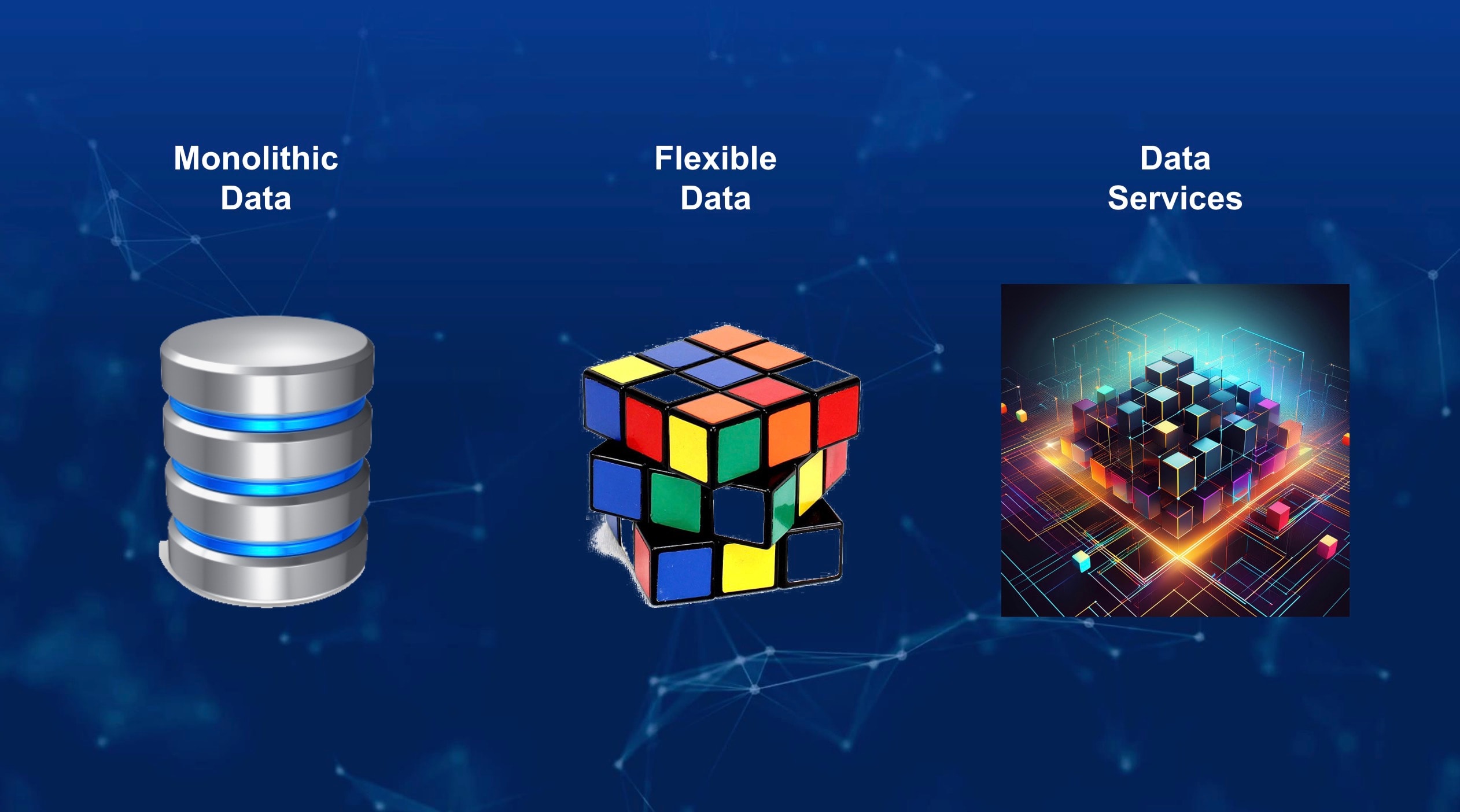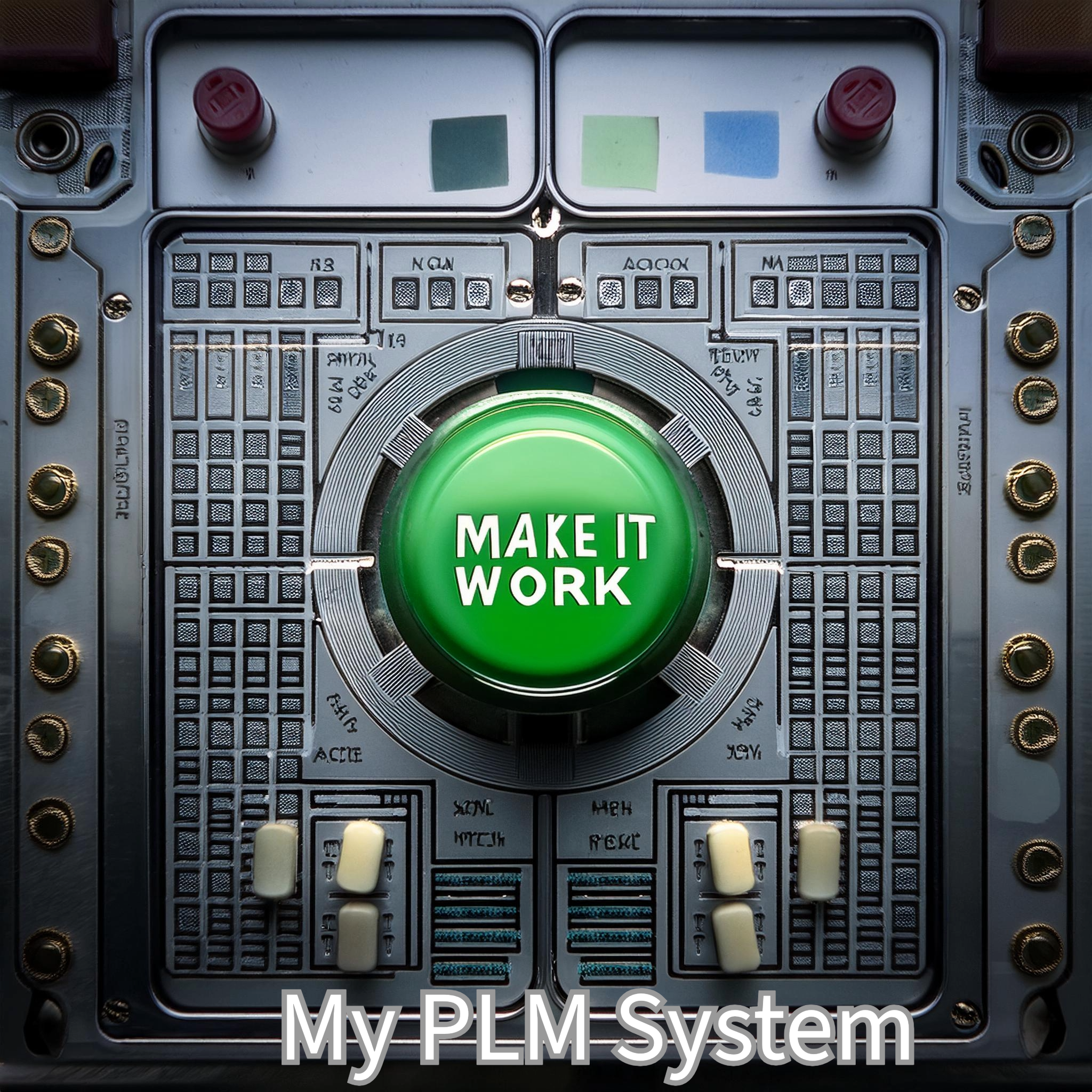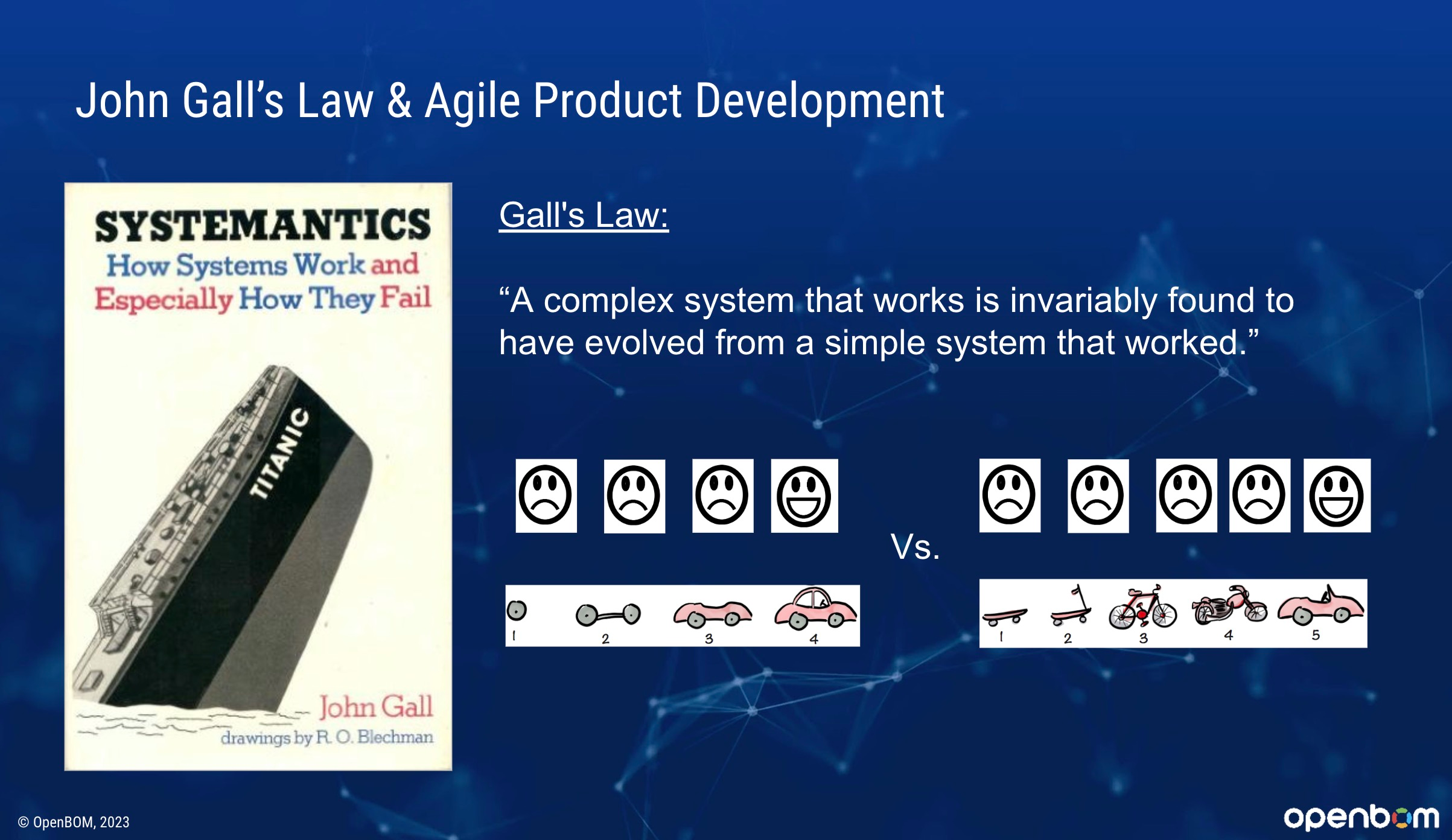
The discussion about PLM as a business and PLM as a software are not new. When someone asks me about what is PLM, I usually says – it depends on the context and people you’re talking to. I prefer to take the language of a customer instead of getting into a complex debates if we consider PLM as a business strategic approach or PDM (not PLM) to be actual software. I think, customers don’t care and use the language they are comfortable with. But the question is how to create a PLM strategy that fits your organization is important one.
I came across the article from Jos Voskuil – PLM business first. Jos shares his experience of developing PLM strategies for businesses in recent years. Here is my 3 takes from the article:
- In recent years, companies have prioritized defining their PLM strategy as an integral part of their broader business strategy rather than immediately selecting a PLM system. This approach aligns PLM implementation with overall business objectives, fostering adaptability in products, services, and business models.
- Moving from implementing the past to implementing the future. Implementing the future means embracing digital transformation, which involves breaking down organizational silos and fostering a coordinated and connected working environment. This transformation requires a clear vision, support from all organizational levels, and a commitment to continuous education and adaptation.
- The key crucial role of middle management in connecting the C-level vision with end users, emphasizing that digital transformation is a fundamental shift requiring dedicated resources. Long-term executive commitment is essential to guide the journey, focusing on business values and objectives rather than just new systems.
According to Jos, this holistic approach ensures that PLM supports the company’s strategic goals in a complex business environment. I love the approach and I think it is very useful. What is missing? From my experience, the problem is usually comes when companies are attempting to translate a beautiful strategy into action and integrating the strategy with software tools, technologies and existing legacy data and implementations. From my experience, when a company stands in front of the decision about what to do with PLM software, customers are desperately looking for a button that called “make it work”.

Introduction: Starting with “Why”
A book by Simon Sinek “Start with WHY” is great a approach you can take in everything. It is more than just a mantra; it’s a strategic imperative. The core principle of “Start with WHY” approach is to inspire people and organizations to discover their deeper purpose, or “WHY,” before focusing on the “HOW” (the process) and the “WHAT” (the product or service). According to Sinek, successful leaders and organizations understand and communicate their “WHY”—their fundamental beliefs, cause, or purpose—first. This principle is based on the idea that people are drawn to and motivated by a clear and compelling purpose, which fosters loyalty, inspiration, and long-term success.
Understanding the core reasons behind your actions and decisions lays a solid foundation for success. It is great to start with “why”, but in the last decades I’ve heard many empty words of PLM business transformation, so before you move there, I recommend. you to slow down and get things more granular. How to ensure their PLM strategies align with broader business objectives rather than getting lost in the complexity of engineering tools and configuration management processes. Business should always come first, as it drives the rationale for implementing any system, including PLM.
Business Benefits Classification
When evaluating product lifecycle management (PLM) strategies, it’s crucial to classify business benefits into three categories: making money, saving money, and mitigating risks. When you think about product data management, document management, supply chain management, product development process, business process management, and product’s lifecycle, you need to ensure that every decision is grounded in tangible business value. From my experience, it doesn’t matter what you do for a company, you can also classify it in the following three activities:
- Make Money: Enhance revenue through improved product innovation, faster time-to-market, and better customer satisfaction.
- Save Money: Reduce costs by streamlining processes, eliminating redundancies, and optimizing resource allocation.
- Mitigate Risks: Minimize risks by ensuring compliance, improving quality control, and enhancing data security.
Every company is different, but approaching PLM and product lifecycle from this perspective provides a clear, compelling business case that resonates with stakeholders at all levels.
The Problem with PLM and Business and Approaches to Change
Historically, PLM has been viewed primarily as an engineering tool, which has led to a disconnect between PLM implementations and broader business objectives. This narrow focus has often resulted in underutilized systems that fail to deliver expected returns on investment. To bridge this gap, it’s essential to reposition PLM as a strategic business tool that supports company-wide goals.
To transform PLM from an engineering-centric tool to a strategic business asset, companies can adopt one of the following approaches:
- Strategic Planning: Develop a long-term vision and roadmap for PLM, ensuring alignment with overall business goals.
- Agile Short Wins: Implement quick, incremental changes that demonstrate immediate value and build momentum for further transformation.
- Balance Between Two: Combine strategic planning with agile execution to create a flexible, adaptive PLM strategy that can evolve with the business.
Gall’s Law and Building Complex Business Systems
Gall’s Law states that complex systems that work invariably evolved from simpler systems that worked. You cannot build a complex system from scratch. It will fail. This is a conclusion that was made by John Gall and it is called Gall’s Law.
What Is ‘Gall’s Law’? Gall’s Law states that all complex systems that work evolved from simpler systems that worked. If you want to build a complex system that works, build a simpler system first, and then improve it over time.
I highly recommend you to check his book – General Systemantics (retitled Systemantics in its second edition and The Systems Bible in its third) is a systems engineering treatise by John Gall in which he offers practical principles of systems design based on experience and anecdotes. The book is offered from the perspective of how not to design systems, based on system engineering failures.

In the context of PLM, this means starting small, with manageable, effective solutions, and gradually expanding their scope and complexity. This approach reduces the risk of failure and allows for continuous learning and improvement. Read more in my article – How To Simplify PLM Complexity.
Building a PLM Business Strategy in an Agile Way Around Data
One of the major trends in enterprise software these days is switch to “data thinking”. In the past, we’ve been more focusing on applications. So called TLA (three letter acronyms) systems were formed around successful organization boundaries and organizations. In the case of manufacturing, we can see – engineering, manufacturing, production, customer relationships, supply chain, etc. If you haven’t heard about Conway’s Law, check this out.
Conway’s law describes the link between communication structure of organizations and the systems they design. His original wording was:[2][3] – [O]rganizations which design systems (in the broad sense used here) are constrained to produce designs which are copies of the communication structures of these organizations.
Future PLM business strategy needs to be build around product data, rather then organizational structure. Focusing data, will give to organization the most successful approach in building their strategy.
Here are my 5 steps:
- Start with Reasons (Why): Ensure every PLM initiative is driven by clear business objectives—making money, saving money, and mitigating risks.
- Align with the Company Vision: Ensure the PLM strategy supports the company’s long-term vision, such as transitioning to a product-as-a-service model.
- Conduct a Tech Assessment: Evaluate the current technological landscape to identify gaps and opportunities for leveraging new tools and platforms.
- Create a Strategic Product Data Foundation: Establish a robust data management framework that supports all PLM activities and integrates seamlessly with other business systems.
- Implement Services Around Data: Develop and deploy services that capitalize on the strategic data foundation, enhancing capabilities and delivering incremental value.
Last year, I introduced Unstoppable PLM playbook, which gives you an agile and flexible mechanism to build your PLM strategy and implementation in an agile and systematic way. Check some of my articles
PLM project failures and unstoppable PLM playbook
PLM playbook: mastering strategies and tactics for unstoppable implementations
Here is a quick picture that explains you the main principles:

What Is My Conclusion?
Focusing on business planning and strategy is undoubtedly compelling. However, balancing a long-term vision with agile technological development and efficient services is crucial. Building a large, integrated PLM system through small, incremental steps ensures adaptability and continuous improvement. The key element of PLM implement success is to switch from application thinking to data and data services thinking. The 5 steps of Agile PLM Business Manifesto gives you ideas how to build a practical framework for achieving the balance between tactical approach and strategic thinking.
In my view, Agile PLM Business Manifesto is the next step in revolutionizing how companies approach PLM. By following these principles, businesses can unlock the full potential of their PLM systems, driving growth, efficiency, and innovation.
Just my thoughts…
Best, Oleg
Disclaimer: I’m the co-founder and CEO of OpenBOM, a digital-thread platform providing cloud-native PDM, PLM, and ERP capabilities. With extensive experience in federated CAD-PDM and PLM architecture, I’m advocates for agile, open product models and cloud technologies in manufacturing. My opinion can be unintentionally biased.












